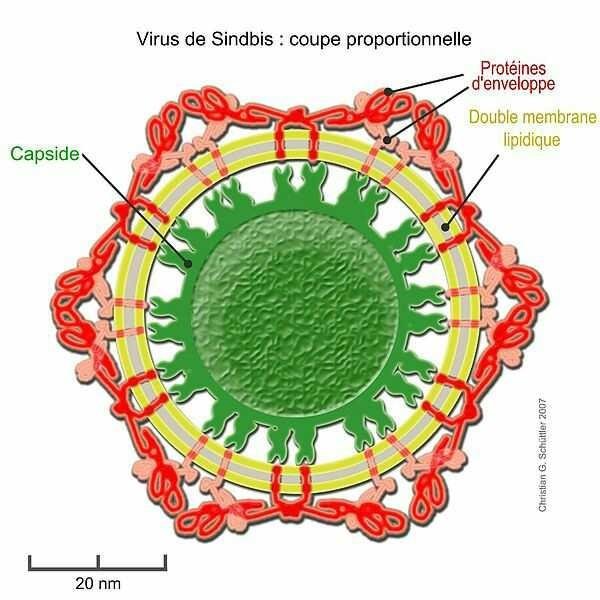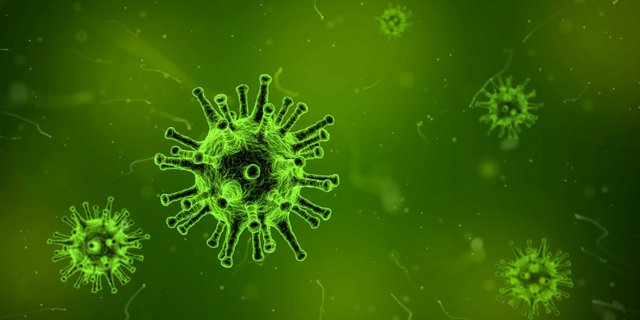Biology - Virus and Its Role in Human Life
In some cases I've written articles or discussed about biology, like plant cells and animal cells. And on this occasion I made an article about Virus.
In the biological sciences Virus is one of the microscopic parasites that infect the cells of biological parties. The virus is obligate parasite, it is because the virus can only reproduce in living material by invading and utilizing it because the virus does not have the equipment to reproduce itself. And usually the virus contains some nucleic acids such as (DNA or RNA, but in this case) that envelop the ingredients that contain proteins, lipids, glycoproteins, or a combination of all three. The viral genome will be expressed as a good protein to produce the genetic material as well as the necessary proteins in the life cycle.
VIRUS CIRCES
In the biological sciences explanation of the body structure of the virus is generally present in all types of viruses.
The type of virus in the world is very diverse and many in number. Of all types of viruses that also have a variety of body types as well. Nevertheless, there remains the characteristic of body structures possessed by viruses in general (most types of viruses). The following will be given an explanation of the characteristics of the body structure of the virus.
- The body of the virus has a genetic material which contains one of nucleic acids, DNA, or RNA alone.
- The body size of the virus is also very small (about 20-300nm), and can only be seen using an electron mechroscope. And its length is about 20-140.000 nm.
- Viruses have a body shape like the letter T, round, oval, or stem, it all depends on the type of virus.
- Viruses can be isolated and crystallized to be considered 'inanimate objects'.
- Viruses can only reproduce themselves (reproduction) when inside the cells of living things.
- The virus develops through the Litik cycle and the Lisogenic cycle.
If we discuss one by one of them, it may be a bit long. But we only discuss the points only.

Creative Commons Attribution-Share Alike 2.0 Germany
Characteristics and Structure of the Virus
In general, the body part of the virus consists of head, neck and tail. Each of these sections has its own function. What do you think it functions? Let's discuss the function of the structure.
Virus Head
At the head consists of nucleic acids (DNA and RNA) and enveloped by the capsid. So what is a capsid? Kapsid is a form of protein and consists of a unit of protein called a capsomer. The capsule also acts as a giver for viruses, protects the nucleic acids from damage in the virus, and provides enzyme proteins to allow the virus to penetrate the host's cell membrane during infection.
Virus Neck
Meanwhile, the neck is a place that connects between the head and tail section. Eits, wait a minute, not all viruses have necks as well. Only complex viruses have. Its function? Of course to support the head. Probably similar to your neck yes, Squad.
Virus Tail
The tail of the virus may be one of the most important parts. Because, this is the tail that will stick to the host body that will be used as a virus house. The tail of the virus is shaped like a tube equipped with fibers. So, you have to be careful with the tail of the virus, yes.
The Role of Viruses in Everyday Life
In everyday life we are also very much the role of viruses, ranging from beneficial to humans to harm humans. Beneficial benefits of viruses include viruses that can weaken the bacteria of jahar, produce vaccines, and also make antioxidants. While the role of harmful viruses is usually a virus that can cause illness.
These are the kinds of viruses that cause various diseases for humans.
- Orthomyxovirus (RNA Virus)
Orthomyxovirus (RNA virus) is a virus that causes influenza (flu) disease. - Paramyxovirus
Paramyxovirus is a virus that causes measles. - Herpesvirus varicella
Herpesvirus varicella is a virus that causes chicken pox. - HIV (Human Immunodeficiency Virus)
HIV is the AIDS virus (Acquired Immunodeficiency Syndrome) that attacks the immune system.
That's an example of some viruses that exist in humans. In addition to humans, the role of viruses also exist in plants and animals. It is all a backlash from the role of the virus.
Reference:
https://blog.ruangguru.com/struktur-virus
http://www.materikelas.com/virus-biologi-pengertian-ciri-stuktur-tubuh-reproduksi-dan-peranan-virus/#
https://id.m.wikipedia.org/wiki/Virus
https://www.labsmk.com/2017/08/ciri-ciri-virus-dan-strukturnya-secara.html?m=1

Actually, they are not a parasite. They behave like one, but they were not considered as a true living organism. Moreover, some of them are known to survive outside of the human host.
Yes they live in various living things. and they also play an important role in the bodies of living things.